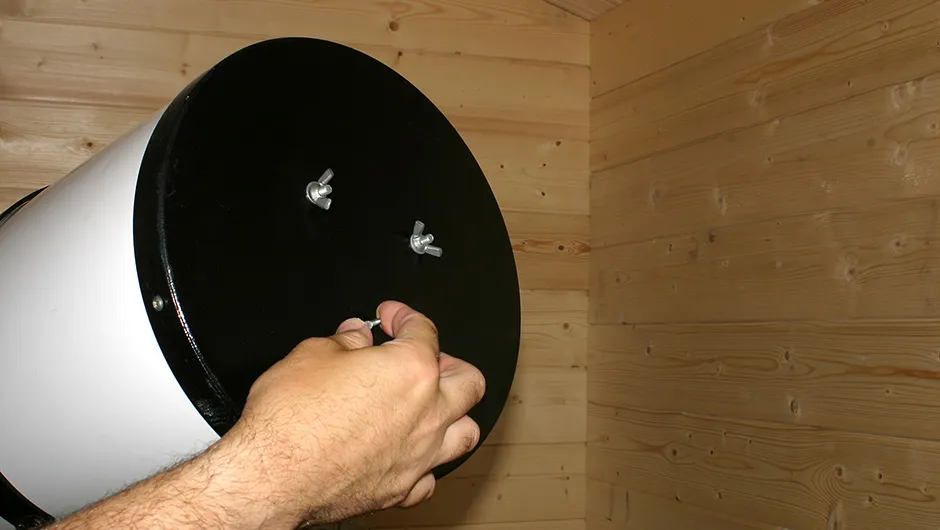For optimum optical performance, it’s very important that a telescope’s optical components are properly aligned to one another – a process called optical collimation.It’s also a task that should be carried out on all new telescopes.
In fact, a telescope with a small focal ratio like f/4 requires more accurate collimation than one with a large ratio such as f/10.
Collimation is one of those procedures that shouldn’t cause any problems, even for a beginner.
Do take care with the procedure, though, and be sure to refer to the manufacturer’s instructions so that you don’t damage an expensive telescope.
In this section we show you how to collimate the two most common designs of telescope – Newtonian and Schmidt-Cassegrain.
The procedure is different for each, so to be of assistance we’ve included two separate three-step tutorials.
Equipment for collimating a Schmidt-Cassegrain
Adhesive paper reinforcing rings
These paper items of stationery, normally used to reinforce loose-leaf page binder holes, are ideal for marking the centre of a Newtonian’s primary mirror.
When placing one on the surface of the mirror, be careful not to touch the mirror with your hands or to drop the ring as you move it to its final position.
Allen key/collimation knobs
If you are collimating Schmidt-Cassegrain, adjustment is made via the secondary mirror mounted on the back of the corrector plate. Many popular SCTs require you to adjust the supplied hex bolts with an Allen key.
Collimation knobs are a simple replacement to the hex bolts that allow you to adjust the secondary’s alignment by hand, without the need for the key.
Cheshire eyepiece
These can be home-built or purchased.In practice, this is one of the most useful tools you can get for your reflector and will make the job of collimation much easier.
Laser collimator
Laser precision makes collimation much easier for beginners.It’s an easy way of bringing your telescope up to peak performance as quickly as possible.
Collimating your Schmidt-Cassegrain
The process of collimating a Schmidt-Cassegrain telescope. is slightly different from collimating a Newtonian and relies on adjusting the secondary mirror fixed to the inside of the corrector plate.
An Allen key is normally used to turn the hex bolts that adjust the position of the secondary.
Be careful not to over-tighten these bolts, or let them become so loose that the secondary detaches from the corrector plate.A set of collimation screws makes adjustments more straightforward – especially in the dark.
Schmidt-Cassegrain collimation is best done using a moderately bright star after letting your telescope cool down to outside temperatures.In fact, it’s a good idea to choose a night when the stars aren’t twinkling too much.

First centre the star with a 200x eyepiece, then defocus it slightly so that you can see a small set of rings around a central hole.
If the rings appear bunched on one side, move the telescope so that the bunched edge is closest to the edge of the field of view.
Then carefully adjust the collimation screws one at a time, so that the star moves back into the centre of the field of view.
If the rings continue to appear offset, repeat the process.
Once this procedure is complete, swap the 200x eyepiece for one with a 600x power and then repeat the entire procedure.
